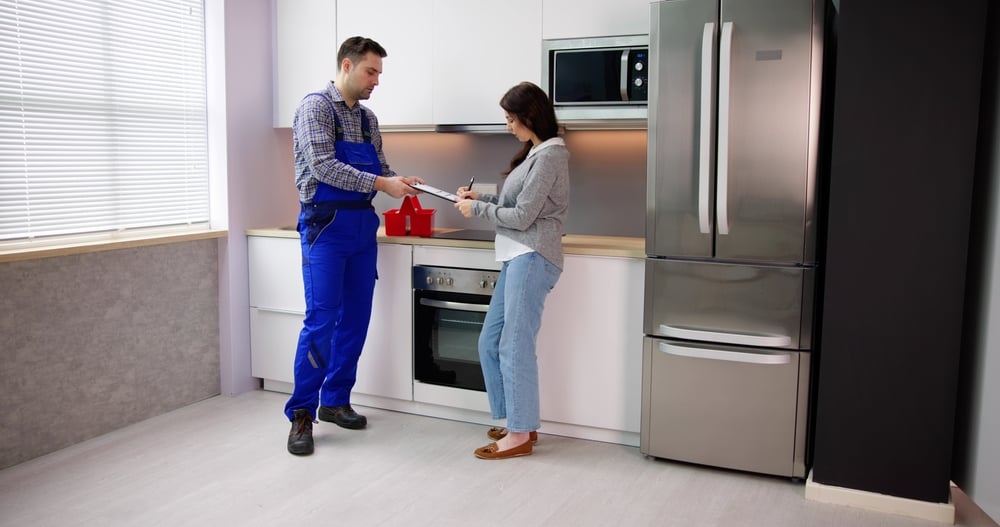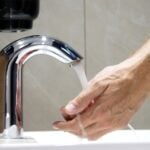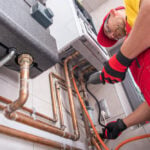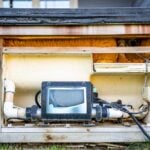
Plumbing Inspections: What to Expect and Why They’re Crucial
Introduction to Plumbing Inspections
When it comes to maintaining a home, plumbing inspections might not always be at the top of the list. However, they are a crucial aspect of home maintenance that can save you from future headaches and unexpected costs. A plumbing inspection involves a thorough check-up of all the plumbing systems in a home, from pipes and drains to fixtures and water heaters. It’s a preventive measure to ensure everything is running smoothly and to identify any potential issues before they become major problems.
Understanding Plumbing Inspections
So, what exactly does a plumbing inspection entail? When you schedule a plumbing inspection, a professional plumbing inspector will come to your home to perform a comprehensive evaluation of your plumbing system. This includes checking for leaks, examining the condition of the water heater, ensuring that the toilets flush properly, and much more. There are different types of plumbing inspections, such as visual inspections, camera inspections, and pressure tests, each serving a specific purpose. For instance, a camera inspection can reveal hidden leaks or blockages in sewer lines that a visual inspection might not catch.
The Importance of Regular Plumbing Inspections
Regular plumbing inspections are vital for several reasons. First, they can catch small issues before they escalate into larger, more expensive problems. For example, a small leak under a sink might not seem like a big deal, but over time, it can lead to water damage and mold growth. Regular plumbing inspections can also ensure that your plumbing system is running as efficiently as possible, which can help reduce your water bill. Additionally, some plumbing issues, if left unchecked, can lead to significant water damage, which can be costly to repair.

What Inspectors Look For
During a plumbing inspection, inspectors follow a detailed plumbing inspection checklist. They’ll look for any signs of damage, wear, or corrosion on your pipes. They’ll check the water pressure to ensure it’s at a safe and functional level and inspect all fixtures, including sinks, tubs, and showers, for proper operation. The inspection also typically includes a review of the water heater, where the inspector will check for proper installation, signs of rust or leakage, and the condition of the temperature and pressure relief valve. Inspectors will also assess the condition of the sump pump and sewage system to ensure they’re functioning correctly.
The Inspection Process
The process of a professional plumbing inspection starts with the inspector arriving at your home and reviewing the plumbing inspection checklist with you. They’ll perform a series of tests and checks on various components of your plumbing system. This includes running faucets to check for leaks, testing the flushing mechanism of toilets, and inspecting the condition of visible pipes. They may also use specialized equipment, like a borescope, to get a closer look at pipes and drains.
A professional plumbing inspection cost can vary depending on the size of your home and the complexity of your plumbing system. However, investing in regular plumbing inspections can save you from spending thousands of dollars on plumbing repairs down the line.
The inspector will also test the functionality of the water heater, ensuring it’s heating water to the correct temperature and that it’s properly vented. They’ll look for any signs of corrosion or leaks, which could indicate that it’s time for a repair or replacement.
At the end of the inspection, the plumbing inspector will provide you with a detailed report of their findings. If they’ve identified any issues, they’ll recommend the necessary plumbing repairs or upgrades. They can also provide you with an estimate of the professional plumbing inspection cost if repairs are needed.
Preparing for a Plumbing Inspection
Preparing for professional plumbing inspections is straightforward but essential. Before the plumbing inspector arrives, make sure to clear the areas around major plumbing fixtures. This includes under sinks, around the water heater, and near any indoor and outdoor supply lines. A clear workspace allows the inspector to perform a thorough home plumbing inspection without obstructions.
It’s also a good idea to have a list of any issues you’ve noticed, like that clogged drain in the guest bathroom or the faucet in the kitchen that drips. While a licensed plumber will spot these issues during the inspection, knowing what problems you’ve encountered can help them pay special attention to potential trouble spots.
What to Expect During the Inspection
When the day arrives to get a plumbing inspection, you can expect the plumbing inspectors to be thorough and methodical. They’ll start by examining the main supply lines to ensure they are delivering clean water into the home without any leaks or damage. From there, they’ll move on to inspect each fixture individually.
The inspector will check faucets, showerheads, and other fixtures for proper water flow and drainage. They’ll look for any signs of a clogged drain, leaks, or damage that could affect their function. They’ll also inspect the toilets to ensure they flush correctly and that the seals and internal mechanisms are working as they should.
In the kitchen, they’ll check the dishwasher and garbage disposal connections, and in the laundry room, they’ll inspect the washing machine hoses and floor drains. If there’s a basement, they’ll examine the sump pump and any exposed piping for signs of wear or corrosion.

Understanding Your Inspection Report
After the comprehensive inspection, you’ll receive a report detailing the inspector’s findings. This document is crucial as it provides a snapshot of the health of your home’s interior plumbing. The report will list any immediate repairs needed, potential issues to keep an eye on, and general maintenance advice.
The plumbing inspector will typically categorize their findings based on urgency. Some issues may require immediate attention to prevent water damage or significant disruption to your home’s plumbing system. Others may be recommendations for future upgrades or changes to improve efficiency or prevent potential problems down the line.
Post-Inspection: Next Steps
Once you have the inspection report in hand, it’s time to take action. If the inspector identified urgent repairs, it’s wise to address these as soon as possible. For non-urgent recommendations, you can plan these out based on your budget and timeline.
If the inspection revealed significant issues, you might want to get a second opinion before undertaking major repairs. Always ensure that any plumber you hire to perform repairs is a licensed plumber with good reviews and a track record of quality work.
For those considering buying a home, a typical home inspection may not delve as deeply into the plumbing system as a dedicated plumbing inspection. If you’re in the process of purchasing a home, consider investing in a professional plumbing inspection for peace of mind and to avoid any unexpected issues after you move in.
Why Inspections are Crucial for Property Sales
When buying or selling a home, a thorough inspection by a reputable plumbing company can make a significant difference. Here’s why:
- Identifies Hidden Issues: Inspections can uncover problems with sewage lines, drainage systems, and the water supply that aren’t visible during a typical walkthrough.
- Informs Negotiations: Knowledge of the plumbing system’s condition can impact the sale price or terms of the agreement.
- Ensures Compliance: A professional plumber can verify that the system meets local codes, including the installation of tankless water heaters and pressure relief valves.
- Prevents Future Disputes: Clearing up any issues before the sale can prevent disputes between the buyer and seller later on.

Choosing a Plumbing Inspection Service
Selecting the right plumbing company for an inspection is crucial. Here’s a checklist to help you choose:
- Licensed and Insured: Ensure the company has licensed professionals and is insured to protect your property during the inspection.
- Experienced: Look for a company with extensive experience in inspecting homes similar to yours.
- Reputation: Check online reviews and ask for references to gauge the company’s reputation.
- Detailed Reports: Choose a company that provides comprehensive reports, so you know exactly what you’re dealing with.
- After-Service Support: A good plumbing company will offer to explain the report and suggest the next steps.
Conclusion
In wrapping up, professional plumbing inspections are a key component of responsible homeownership. They ensure that critical components like the septic tank, sewer line, and vent systems are functioning correctly and efficiently. Regular check-ups by a professional plumber can prevent major repairs, protect your investment, and provide peace of mind. Remember to:
- Schedule Regular Inspections: Even if everything seems fine, routine checks can keep it that way.
- Be Proactive: If an inspection reveals issues with your water supply or drainage systems, address them promptly.
- Upgrade When Necessary: Modern fixtures like tankless water heaters can improve efficiency and add value to your home.
By following these guidelines and ensuring your plumbing is in top shape, you can enjoy the comforts of your home without the worry of unexpected plumbing disasters.







